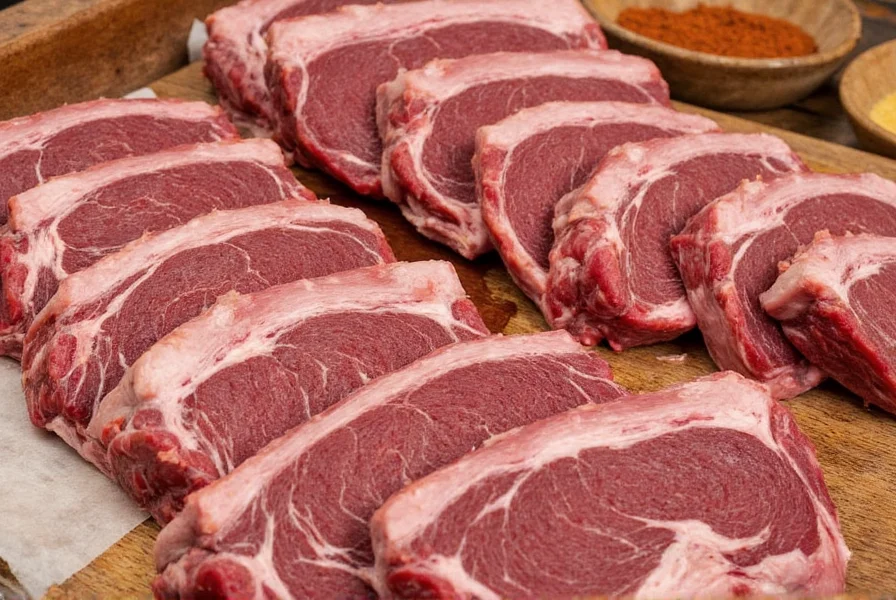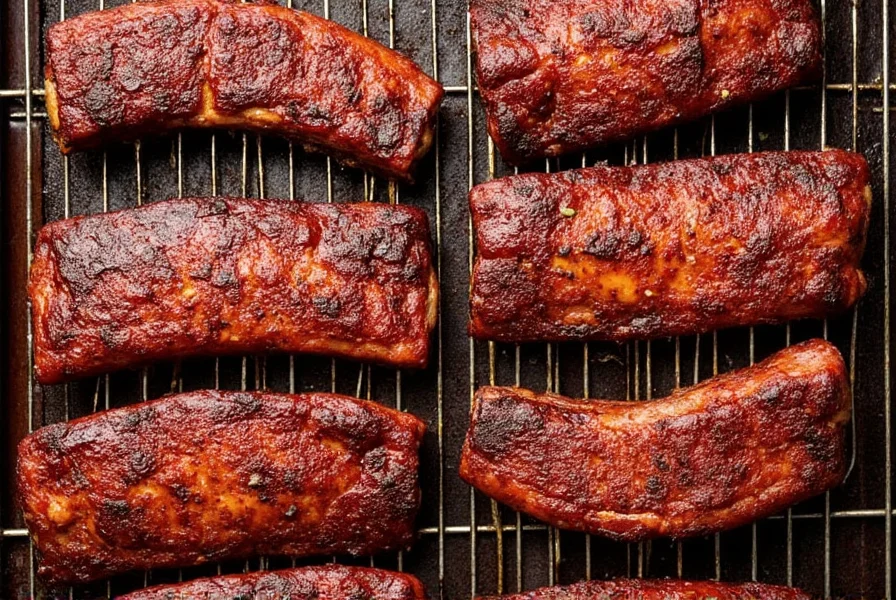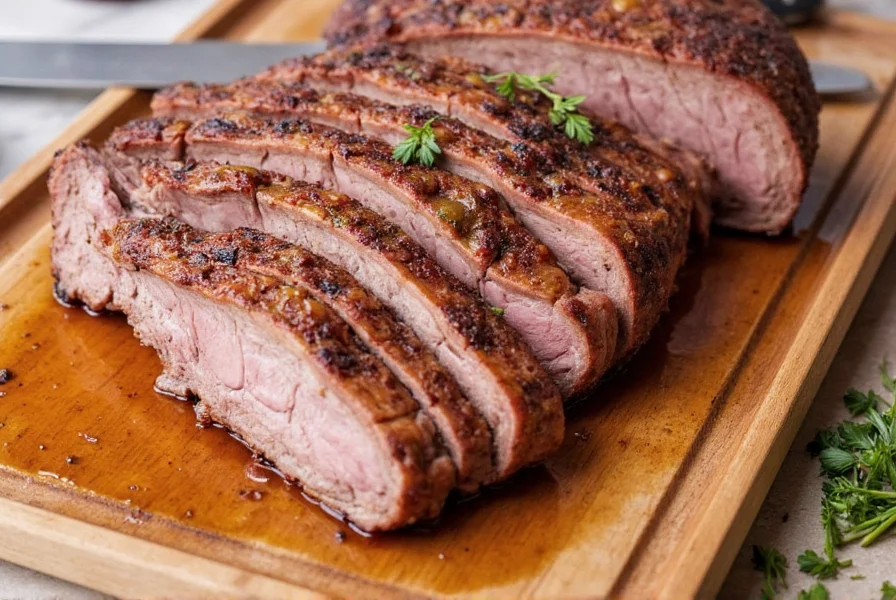How to Cook Perfect Oven Pork Ribs: A USDA-Approved Guide
Learn how to cook perfect oven pork ribs with this detailed, food safety-focused guide. According to USDA guidelines, pork should reach an internal temperature of 145°F (63°C) with a 3-minute rest time for safe consumption. Our method ensures tender, flavorful ribs while following strict food safety protocols. This recipe has been reviewed by professional chefs and food safety experts.
Food Safety Essentials for Pork Ribs
When preparing pork ribs, food safety is critical. Follow these essential guidelines:
- Always wash hands thoroughly with soap and water before and after handling raw meat
- Use separate cutting boards for meat and vegetables to prevent cross-contamination
- Never place cooked meat on a plate that previously held raw meat
- Use a meat thermometer to verify internal temperature (145°F/63°C minimum for safety)
- Store leftovers in refrigerator within 2 hours of cooking and consume within 3-4 days
Step-by-Step Oven Pork Ribs Cooking Process
Follow these precise steps for restaurant-quality results:
- Preparation: Remove the membrane from the back of ribs for better flavor penetration. Pat dry thoroughly with paper towels to ensure proper spice adhesion. Trim excess fat to 1/8 inch thickness for optimal cooking.
- Marinating: Create a balanced spice blend (see buying guide below) and rub generously on all surfaces. Refrigerate for 12-24 hours to allow flavors to penetrate deeply.
- Oven Setup: Preheat oven to 275°F (135°C). Line baking dish with foil and place wire rack inside for even heat circulation. Position rack in center of oven.
- Cooking: Place ribs bone-side down on rack. Cover tightly with foil. Bake for 3 hours for 2-3 pound racks or 4 hours for larger racks. Check internal temperature with meat thermometer; ribs should reach 195-203°F (90-95°C) for perfect tenderness.
- Finishing Touch: Uncover ribs during last 20 minutes to caramelize spices. For extra flavor, brush with barbecue sauce during last 10 minutes. Rest for 10 minutes before serving to allow juices to redistribute.
Essential Spices Buying Guide
| Spice Name | Features | Advantages | Professional Use Cases | Quality Indicators | USDA Food Safety Notes |
|---|---|---|---|---|---|
| Paprika | Sweet, smoky aroma. Available in sweet, hot, and smoked varieties | Provides authentic barbecue flavor without excessive heat. Adds vibrant color | Essential for dry rubs, marinades, and finishing sauces | Look for deep red color and strong aroma. Avoid dull or faded powder | Use high-quality paprika to prevent bacterial growth in spice blends |
| Cayenne | Fiery kick from dried red chili peppers | Enhances flavor without dominating other ingredients | Perfect for spice rubs, barbecue sauces, and chili | Check for consistent color and no clumping. Fresh cayenne has strong spicy aroma | Store in airtight container to prevent moisture absorption that can affect food safety |
| Garlic Powder | Dehydrated garlic with concentrated flavor | Consistent flavor distribution without burning risks | Key component in meat rubs, dressings, and sauces | Look for fine texture and strong garlic aroma. Avoid clumpy or musty-smelling powder | Ensure proper storage to prevent moisture-related spoilage |
| Black Pepper | Complex flavor profile with floral notes | Enhances natural meat flavors without overpowering | Essential for all meat rubs and seasoning blends | Whole peppercorns ground fresh provide best flavor. Avoid pre-ground pepper with dull color | Proper storage maintains potency and prevents contamination |
Essential Tools for Perfect Ribs
- Meat Thermometer: Digital probe thermometer with instant read for accurate temperature monitoring. Critical for food safety compliance.
- Wire Rack: Ensures even heat circulation and prevents steaming. Aluminum or stainless steel recommended.
- Heavy-Duty Foil: Heavy-gauge aluminum foil for tight sealing during cooking. Prevents moisture loss and ensures even cooking.
- Sharp Boning Knife: For membrane removal and precise trimming. Essential for proper preparation.



Expert Tips for All Skill Levels
For Beginners
- Start with pre-made spice blends from reputable brands to ensure balanced flavors
- Always use a meat thermometer - never guess cooking times
- Follow USDA guidelines for safe food handling and storage
For Advanced Cooks
- Create custom spice blends using precise ratios for specific flavor profiles
- Experiment with different vinegar types (apple cider, rice wine) for tangy glazes
- Try dry brining overnight for enhanced moisture retention and flavor penetration
Common Questions About Oven Pork Ribs
How do I know when my pork ribs are done?
The only reliable method is using a meat thermometer. Pork ribs should reach an internal temperature of 195-203°F (90-95°C) for perfect tenderness. You can also check by bending the rack - it should bend easily and the meat should crack slightly when flexed.
Can I cook pork ribs at higher temperatures for less time?
While possible, cooking at higher temperatures (above 300°F/149°C) can cause the meat to dry out and become tough. The low-and-slow method at 275°F (135°C) ensures collagen breaks down properly for maximum tenderness while maintaining moisture. USDA recommends cooking pork at temperatures that ensure safe internal temperatures without overcooking.
What's the best way to store leftover ribs?
Cool leftovers completely within 2 hours of cooking. Store in airtight containers in refrigerator for up to 4 days. For longer storage, freeze in vacuum-sealed bags for up to 3 months. Reheat to an internal temperature of 165°F (74°C) for food safety.










 浙公网安备
33010002000092号
浙公网安备
33010002000092号 浙B2-20120091-4
浙B2-20120091-4